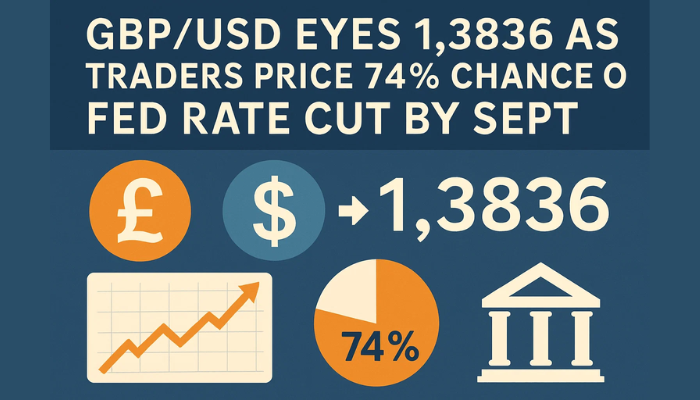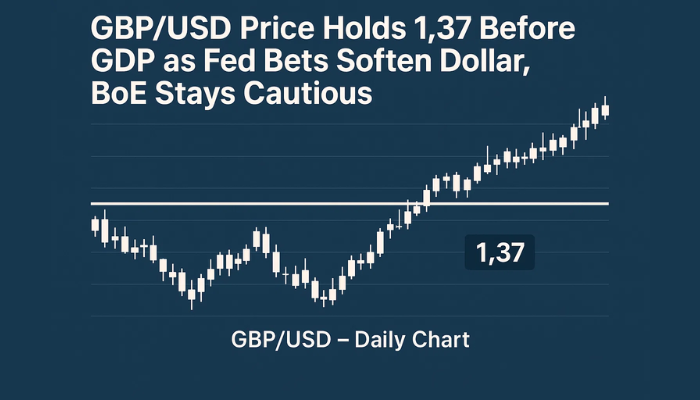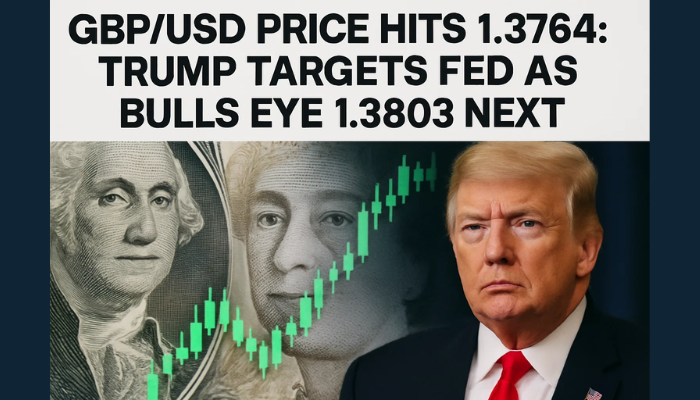Will GBP/USD Head for Parity Too, As UK Economy Heads Into Recession?
GBP/USD lost six cents this week and the decline is escalating, which points to parity after the break of 1.109, as UK economy weakens

The Bank of England was among the first to start raising interest rates in December last year, having delivered seven hikes back-to-back in every meeting. They have failed to tackle the price surge as consumer inflation reached record levels in recent months. Although, what these rate hikes have done is hurt the economy.
The UK economic activity has been declining at its quickest pace since January 2021, as cost pressures remain high and demand conditions wane. This shows that the economy is already in a technical recession and with the outlook being rather bleak, it is tough to see how any of this is going to provide much comfort for the GBP and BOE in the coming months.
GBP/USD Daily Chart – MAs Pushing the Price Lower
The decline is accelerating for this pair
The UK economy is weakening, with manufacturing activity falling into contraction in August, while this week’s services report showed that this sector which makes up for 80% of the UK economy fell into contraction as well.
UK September Services PMI
- September flash services PMI 49.2 points vs 50.0 expected
- August services PMI was 50.9 points
- Manufacturing PMI for September 48.5 points vs 47.5 expected
- August manufacturing was 47.3 points
- Composite PMI 48.4 points vs 49.0 expected
- Prior composite PMI was 49.6 points
S&P Global notes that:
“UK economic woes deepened in September as falling business activity indicates that the economy is likely in recession. Companies report that the rising cost of living, linked to the energy crisis, and growing concerns about the outlook are subduing demand and hitting output levels to an extent not seen since 2009, barring the pandemic lockdowns and initial 2016 Brexit referendum shock.
“Forward-looking indicators meanwhile deteriorated further in September. Both the new orders and future expectations gauges have descended to levels that have rarely been weaker in the past, and are consistent with a deepening downturn as we head into the fourth quarter.
“Inflationary pressures continue to run higher than at any time in over two decades of survey history prior to the pandemic. Renewed supply constraints, soaring energy prices, and rising import costs associated with the weakened pound are adding to cost pressures, meaning the overall rate of inflation signalled will remain of great concern to policymakers at the Bank of England. However, the detrimental impact of tightening policy into a recession is becoming increasingly apparent, with the downturn likely to intensify as we head into winter.”
This means that the BOE will slow down or stall with rate hikes. The market was pricing in a 75 bps rate hike and the BOE “only” delivered a 50 bps hike, which might be enough to dial back some of the future pricing for BOE tightening.
The OIS market had fully priced the bank rate to be at 3% by November. That has now dropped to pricing in ~75% odds of 2.75% instead now. Adding to that, there have been consistent pullbacks for the 2023 meeting dates for the BOE by roughly 25 bps across the curve as well. On the other hand, the FED continues to tighten the policy, which will support the USD further, so GBP/USD is heading for further lows.
- Check out our free forex signals
- Follow the top economic events on FX Leaders economic calendar
- Trade better, discover more Forex Trading Strategies
- Open a FREE Trading Account



